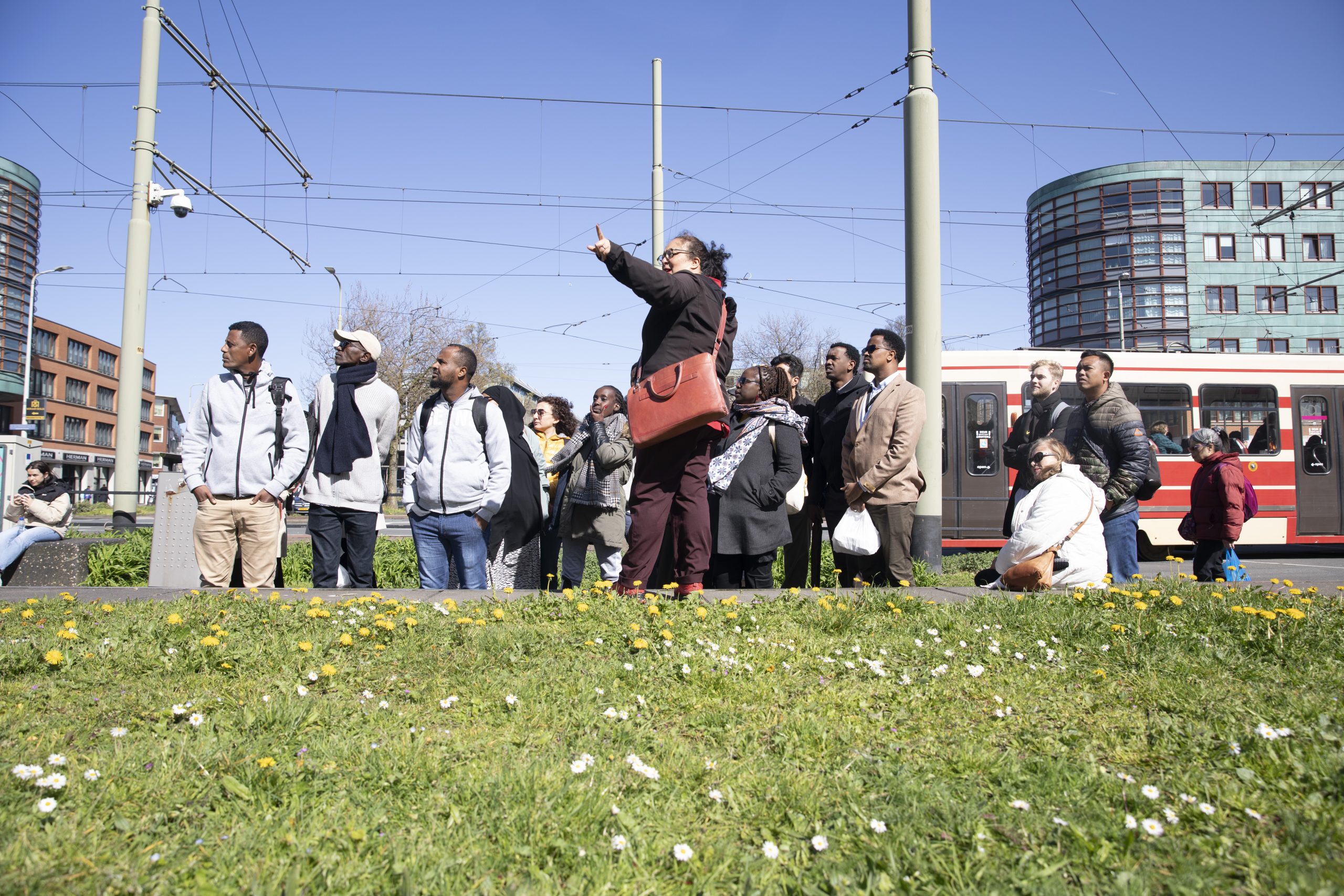Citizen participation is a cornerstone of effective urban planning. As urban spaces increasingly become central to human habitation, citizens play a crucial role in shaping their environments. Shyam Khandekar, one of our experts in urban design and landscape architecture, has been a vocal advocate for creating inclusive and liveable cities, exemplified by his founding of the international knowledge platform My Liveable City.
The Case of Coevorden
Urban planning significantly impacts residents’ lives and livelihoods, making citizen input essential. By involving citizens, plans can better reflect community needs and aspirations, nurturing a sense of ownership and responsibility among residents.

Participants of the training Citizen Participation and Inclusive Governance on a study visit in Schilderswijk
An exemplary case of citizen participation driving urban planning decisions can be seen in the historic city of Coevorden, Netherlands. In 1999, Shyam was tasked with creating a vision for the city’s historical part, which was dilapidated. Recognising the diverse interests of 17 groups, from historic preservationists to cycling enthusiasts and retailers’ associations, the local politicians opted to take a back seat, allowing these groups to drive the vision development. The result was a comprehensive action plan with unanimous support from all interest groups. This broad-based support ensured the vision’s longevity, even as different political parties came to power over the years.
Fostering Long-Term Community Involvement
Maintaining robust community engagement is pivotal for the success of urban projects beyond the initial planning stages. Shyam underscores how critical long-term team involvement is in urban planning success. “Frequent changes in project managers and lack of committed team members can undermine citizen trust and jeopardise project success”.
The Kerkebosch neighbourhood project in Zeist is an inspiring example. Fifteen years ago, Shyam collaborated on a master plan to rejuvenate a run-down post-war housing estate in Kerkebosch, aiming to integrate new housing with the surrounding forested areas. The project thrived under the guidance of a project manager with a background in landscape architecture. He not only oversaw the construction of homes and infrastructure but also cultivated a community deeply connected to the natural environment. Through various year-round activities, a vibrant community was created, invested in the well-being of their neighbourhood and its surroundings.
To ensure the long-term involvement of citizens in urban projects, municipalities often maintain specialised communication departments. These departments use various channels, such as websites, newsletters, public meetings, and information centres, to keep residents well-informed about developments in their environments. Such efforts are crucial for nurturing and sustaining citizen trust, helping the community remain engaged throughout the long-term implementation of urban plans.

Participants of the training Citizen Participation and Inclusive Governance on a study visit on Urban PLacemaking in the Hague
Addressing Diverse Perspectives and Conflicts
Urban planning inevitably involves managing diverse perspectives and conflicting interests. So, how can these interests be reconciled? According to Shyam, effective consensus-building remains a priority.
“Inviting various interest groups to meetings where they can hear each other’s demands often helps to increase understanding and collaboration,” reflects Shyam. “This leads to compromises and the development of a plan that is considered a collective vision.”
Shyam has facilitated discussions among interest groups in several projects, allowing them to negotiate directly, resulting in a more inclusive and accepted plan.
Contributing to Sustainability and Resilience
Including citizens’ voices enhances urban development sustainability and resilience. By involving citizens at every stage, urban planners can ensure that their projects not only meet immediate needs but also adapt to future challenges, reflecting the community’s evolving aspirations. When citizens feel ownership, they are more likely to support necessary changes, fostering a cooperative and proactive approach to urban development. Shyam Khandekar’s experiences and insights vividly illustrate the transformative power of citizen engagement in urban planning.
Interested to learn more?
Are you interested in learning more about how to engage citizens in urban planning and inclusive policy-making? Sign up for our 2025 Citizen Participation and Inclusive Governance course or contact us for a programme tailored to the needs of your organisation.
Related courses
We offer a diversity of courses throughout the year. Here are several other courses you might like.


